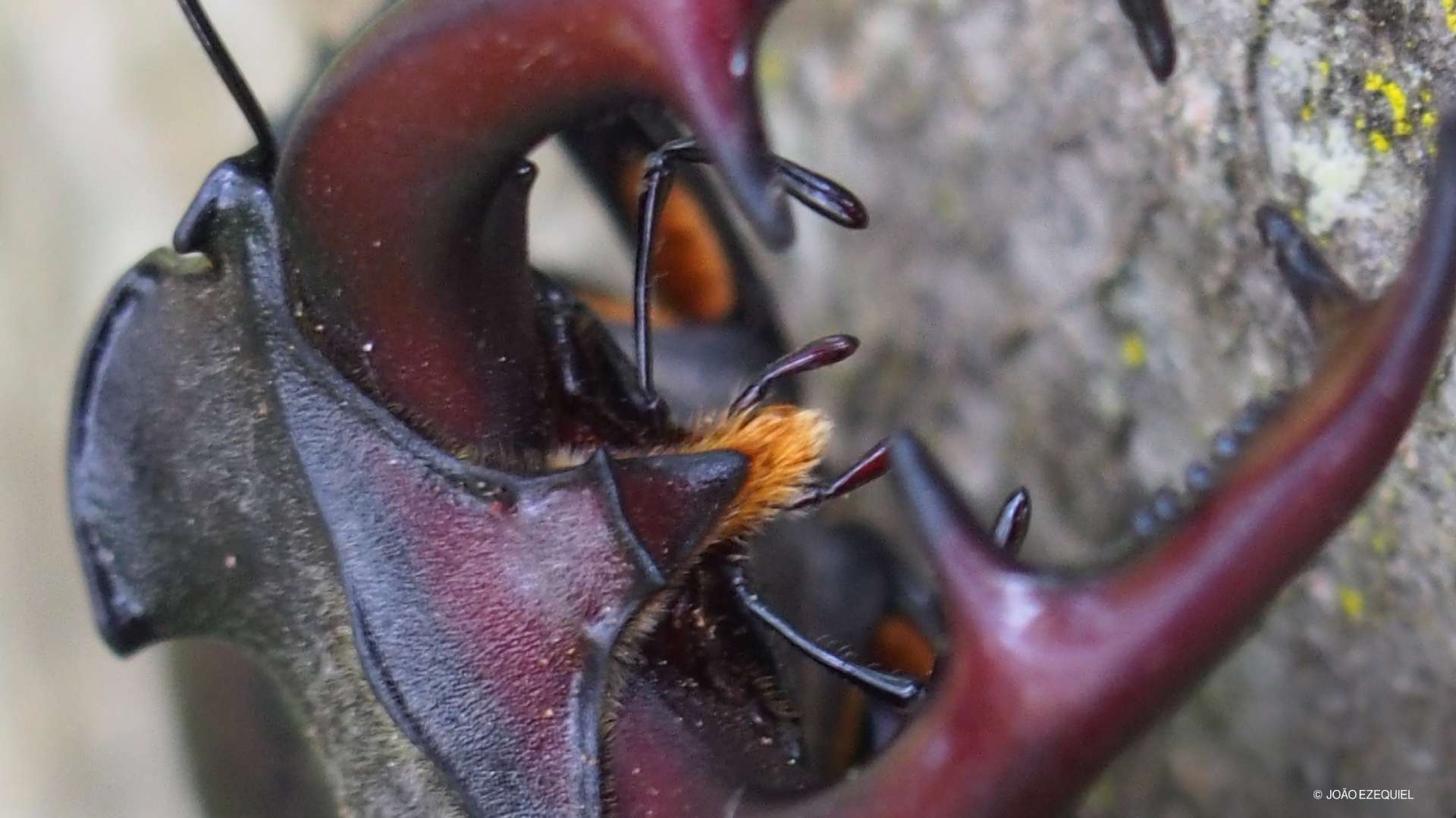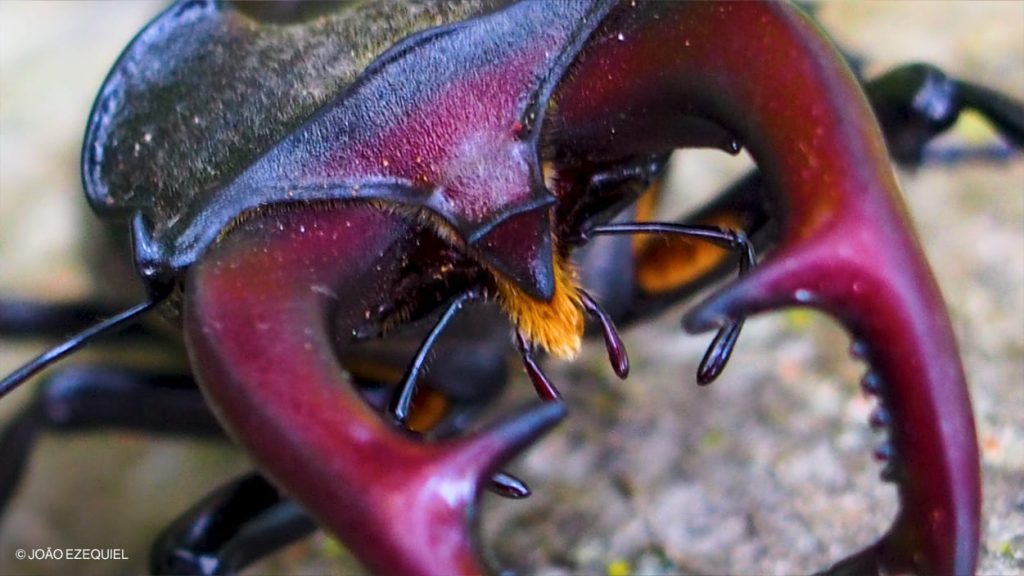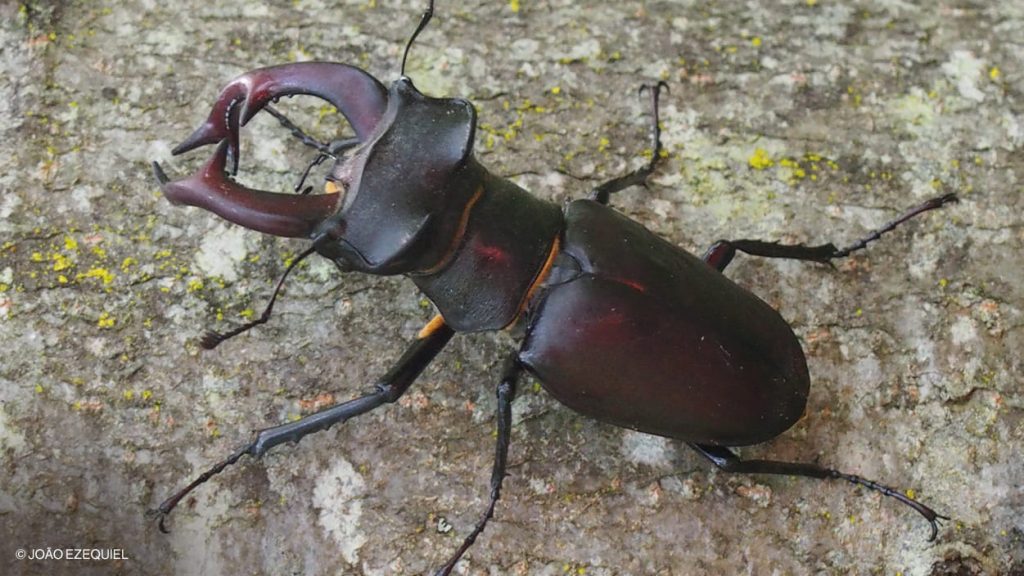Considered the largest insect in Europe, the stag beetle (Lucanus cervus) lives in Portuguese forests and depends on ancient trees. In Europe, its status is “Near Threatened”.
A curious and relatively rare species, the stag beetle stands out because of its large size compared to other insects. Also known as the pinching bug, this is the largest insect in Europe, reaching nine centimetres in length.
From the Lucanidae family, the stag beetle is a coleopteran – an order of insects that includes beetles, ladybirds and weevils – and its habitat is mature forests with old deciduous trees, especially oaks (Quercus spp.). When they are larvae, they live in the soil and in the roots of trees, feeding on dead wood. The larvae – which can be even larger than the adults (10 centimetres long) – undergo several transformations over a period of up to three years, and then emerge as adults.
Males and females are quite distinct at this adult stage. While males have large, reddish-brown mandibles (for fighting rival males), females have small, black mandibles. The males display themselves high up in trees, making themselves visible to the females and this elevated position allows them to take down rival males, knocking them to the ground. After mating, the males die and the females look for safe places to lay their eggs, which guarantee the survival of the new generation. After laying, they also die.
During their short adult life, they are mainly seen in the summer months, when they are most active and when they feed on the sap that comes from small cracks in the bark of some species of oak, such as the common oak (Quercus robur) or the northern red oak (Quercus rubra). The stag beetle has high nutritional value and is a food source for birds (such as the carrion crow, magpie and kestrel) and also for some mammals, such as the fox (Vulpes vulpes).
The reduction in numbers of this species due to habitat loss, especially in northern Europe, has led the European authorities to include the stage beetle in the species listed in Annex II of the Habitats Directive (92/43/EEC of the Council, of 21 May 1992), which designates species of community interest whose conservation requires the designation of special conservation areas. The species is also listed in Appendix III of the Berne Convention on the Conservation of European Wildlife and Natural Habitats and is classified as Near Threatened by IUCN.





